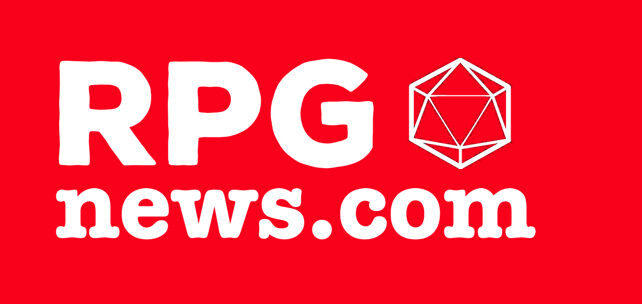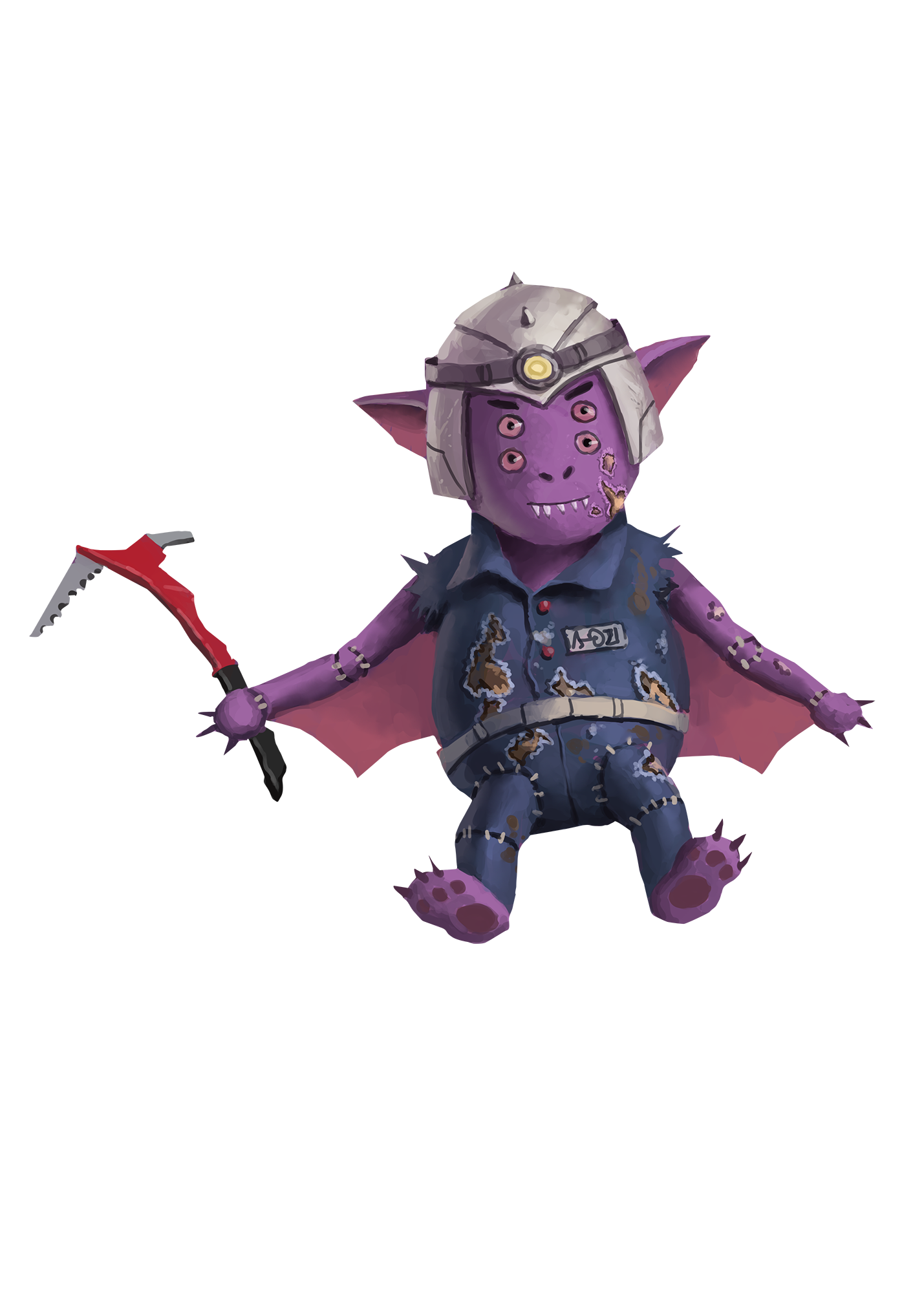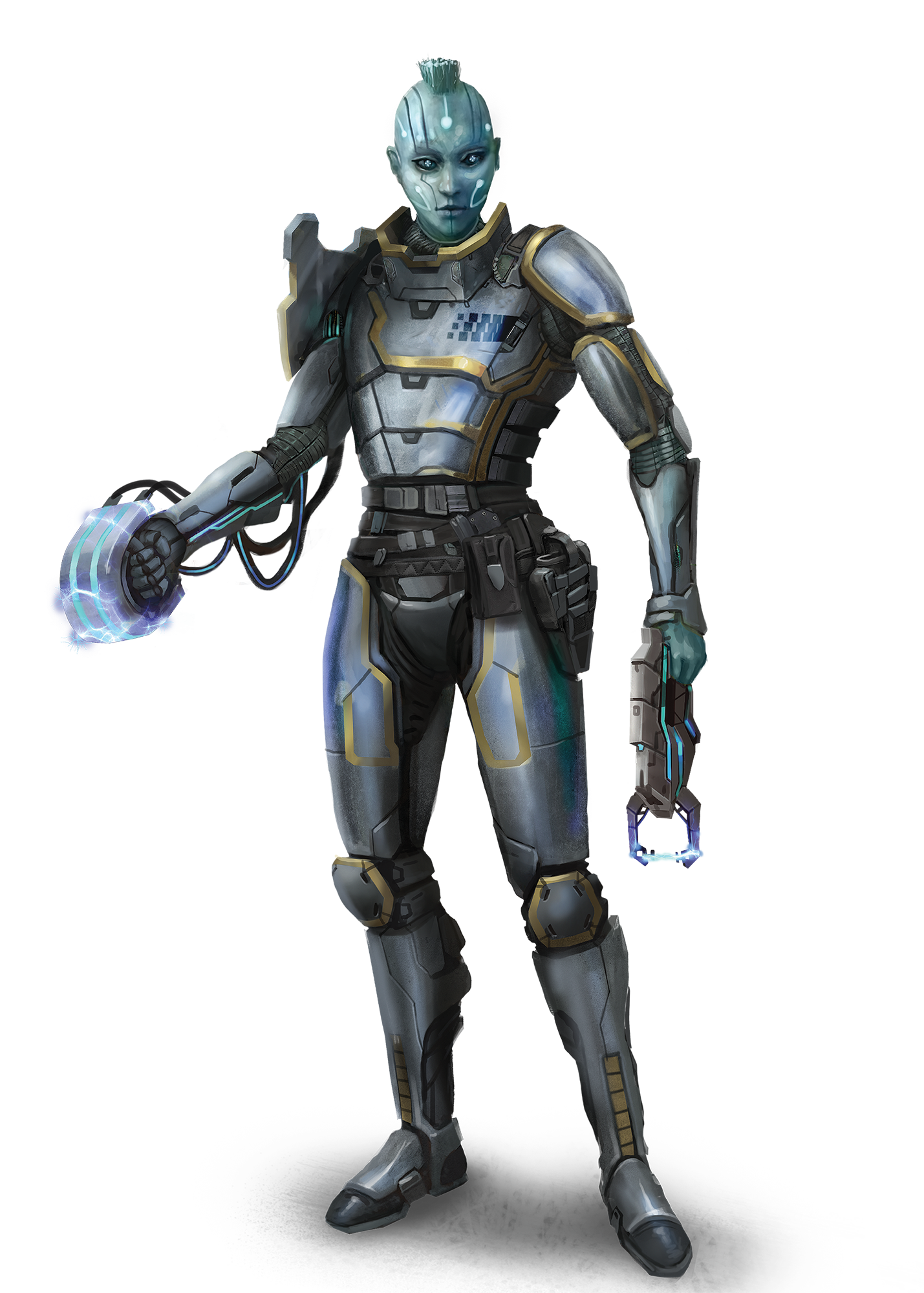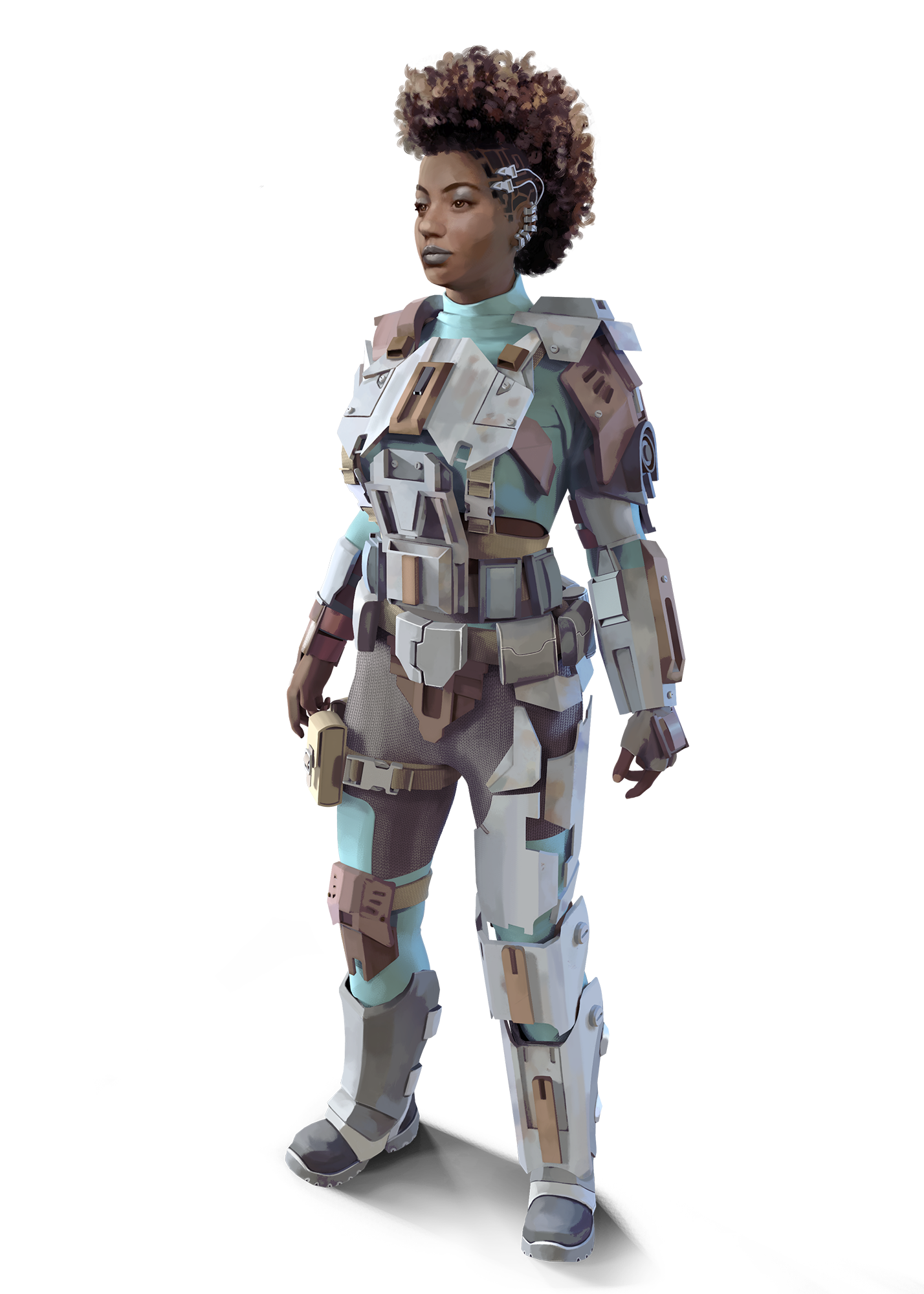Today is National Science Fiction Day in the U.S., so it feels a bit like a communal unbirthday for every author who writes weird fiction speculating about what might happen. I took a stroll around the virtual office to talk with some of my colleagues, who are science fiction authors and game designers themselves, and asked them to talk about their personal connections to sci-fi, their inspirations, and what kind of stories interest them.
Alien Mascot, art by Milos Rocenovic It will probably come as a surprise to no one that my biggest sci-fi influences are largely comedic. I mean, when faced with yawning infinite void of space, you just have to laugh, right? For me, it probably started with The Hitchhiker’s Guide to the Galaxy in all its forms: books, radio play, text adventure, BBC series, and eventually, major motion picture. There’s something so relatable about a hapless Earthling being thrust into a galactic adventure of stolen spaceships, time travel, and bureaucracy. From there, I would find Space Quest (featuring the first space janitor?), Red Dwarf (“Everybody’s. Dead. Dave.”), Callahan’s Crosstime Saloon (though that series is more a vehicle for puns than anything else), and Futurama (best math jokes in the biz!). The goofier episodes of The X-Files and Farscape are among my favorite. More recently, Galaxy Quest and Lower Decks have taken their shots at that most venerable of sci-fi institutions, Star Trek. Much of comedic sci-fi lovingly pokes fun at its own genre or points at the foibles of the present through a sci-fi lens. And that’s the kind of influence I try to bring to Starfinder when appropriate. Our iconic biohacker hosts a family-friendly science-oriented vidshow that often leads to more danger than it should. A group of skittermanders rescue their vesk boss from a dangerous massage machine. I love adding those sorts of touches, and I hope you enjoy them too! I can’t wait for you to see what’s next!
Jason Keeley
Starfinder Development Manager
Android, art by Mark Molnar My dad got me into science fiction at an early age, with Heinlein’s Rocket Ship Galileo. Heinlein wrote a YA science fiction novel every year, just in time for Christmas. It was a smart strategy. I don’t know how many of those books I read: Have Spacesuit Will Travel, The Star Beast, The Moon is a Harsh Mistress. In high school, I had my first actual class on science fiction, which introduced me to everything from Asimov and John Carter to Riverworld and Chalker’s Well of Souls; predictably, my final project was a Well of Souls wargame I designed myself. In fact, by this point, my science fiction intake was starting to be determined as much by games as by novels; I spent my rainy days pouring over Traveler’s Imperium, rolling random mutations in Gamma World, and playing Star Fleet Battles. When I got to college, I wandered the campus bookstore looking for stuff I’d never heard of before, and that got me to Phil Dick’s Man in the High Castle and the Mirrorshades anthology, which broke open the cyberpunk genre. It took me a couple of tries to figure out Dune. As a graduate student, I studied science fiction under the great and much-missed Dr. George Slusser, curator of the University of California Riverside’s Eaton Collection, one of the largest collections of SF in the world. One day, on my way out of class, I told Slusser, “You know, I want your job.” He said to me, “Stick around here long enough, you might get it.” When he passed in 2014, I applied for that gig. I didn’t get it, but no regrets. Now, I get to make science fiction instead of curate it, and some of the things I’ve made are on the shelves of the Eaton Collection. I’ll take that deal.
Jason Tondro
Senior DeveloperWe’re standing next to each other at a convention. It’s loud and crowded here in the dealer hall, but we’ve identified one another as fellow sci-fi nerds; the awkward serendipity when two weirdos recognize each other in the wild. We’ve been existing in a pandemic for two years at this point so we desperately want to chat with someone new, so we’re eager to start a conversation. Our hobby is our common ground, so we start talking about favorite works of sci-fi. You list the various novels, video games, and films that first connected you to a network of other minds imagining extraordinary realities. I tell you I’m inspired by the works of Yoko Taro, Octavia Butler, Toni Morrison, Tade Thompson, and the Strugatsky brothers. Then you ask one of those classic icebreaker questions: Which Star Trek is your favorite?
Cleo Striker, art by Raphael Madureira I shrug. I’m not really into Star Trek, but I watched some with my parents growing up. (Star Wars’ western vibe was always more my jam, but my dad’s a certified trekkie.) So I tell you that my favorite is Voyager. Why? You ask. You’re correctly assuming Captain Janeway has something to do with it. We rewind to my childhood. When my parents began watching Voyager, I was an awkward girl with scabbed knees and an unflattering bowl cut. During the show’s run, I transformed from invisible tomboy to sullen preteen. I hated my body and wasn’t comfortable with the changes puberty was enforcing on it. I didn’t agree with everything I saw in the world around me. I was powerless to change anything and waiting for my real life to begin. Enter Seven of Nine, a badass with a crisp Federation uniform and stylish pixie cut. She was everything I dreamed of becoming. In her, I saw the future.
But she was more than a childhood role model for me. Even though I never watched the entire series, Seven’s narrative first sparked my interest in telling stories that explore the definition of humanity and the nature of the soul. She was concrete evidence of a feminine person driving her own narrative. And there were others like her. Ripley, Sarah Connor, General Leia, and (much later) Furiosa became favorite characters and visions of powerful femininity, canonized as goddesses in a new pantheon. I expect that of all my space heroines, Seven of Nine had the deepest influence on me.
Now, imagine yourself back in the convention hall. You listen politely to my explanation and we gush about our favorite sci-fi characters for few more minutes. I ask you another question, maybe about video games, and the ice is broken. We chat for a while. We say goodbye and head off to our next destinations, happy to have met and befriended a fellow nerd.
But, I digress. This is a blog about sci-fi in general, not “POV: you meet me at a convention.” Sci-fi works have had such an influence on my life, and it’s pretty amazing to be able to call myself a sci-fi creator now. When experiencing sci-fi, we can dream of other worlds near and far. We can hope for a bright solarpunk future and try to write it into being, or examine the great conflicts of our own lives, our fears, our struggles, through a lens that allows others to understand us better. Thanks to all of you for your interest in other worlds, and expect the aliens, philosophical machines, mechs, and space shenanigans to continue.
Jenny Jarzabski
Starfinder DeveloperYou heard from some of us. What’s your favorite work of science fiction? What inspires your own Starfinder games? We’d love to hear from you!
Read more at this site



